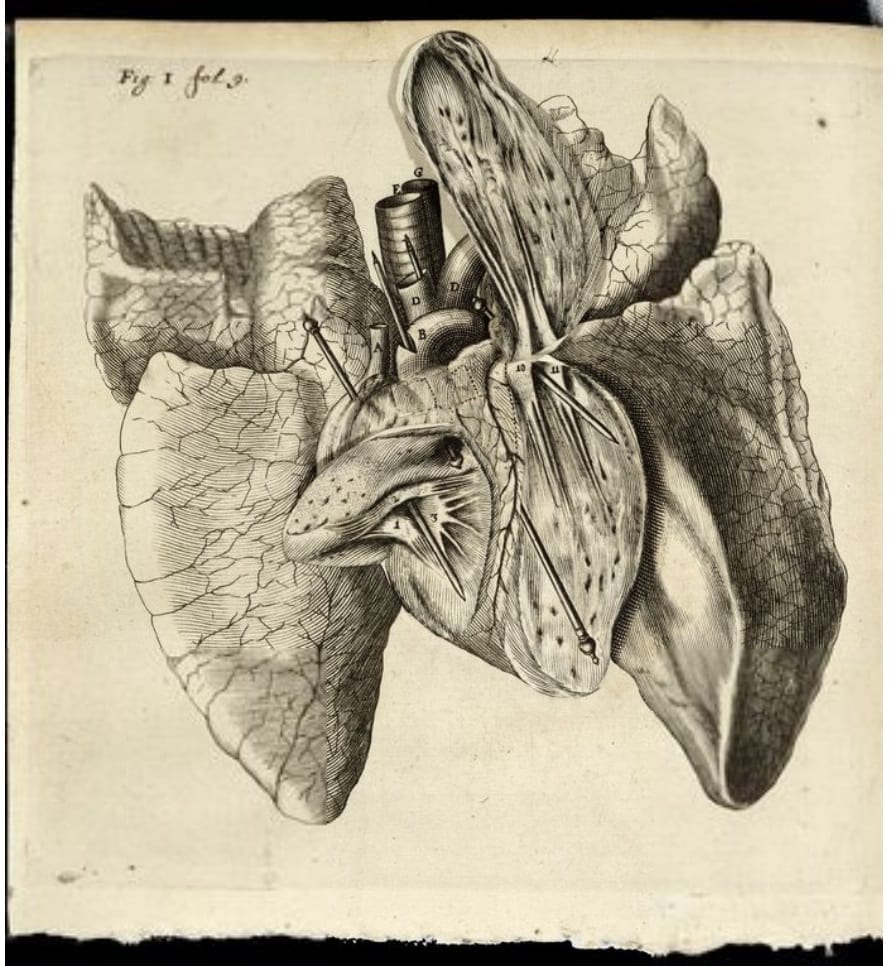The famous philosopher René Descartes had an interest in physiology. But although he is known to have carried out dissections and even vivisections, he was a theoretician and not an experimentalist. In 1643 he wrote that having read William Harvey’s 1628 De Moto Cordis he agreed with the theory that the blood circulated through the body in a closed system of arteries and veins. But having rejected the notion of involuntary muscle contraction, he argued that the heart functioned not as a pump but rather as a furnace. In his view the heart heated small particles of the blood instantaneously, expanding the blood volume and causing the heart to swell, opening its valves and thus propelling the blood into the aorta.
The heart shown in the image is from De homine by Descartes, published posthumously in 1662. It was unique in that it contained flaps that could be raised or lowered to view the interior of the organ. One can see long needles in the heart indicating key areas.

Reference
W. Bruce Fye: René Descartes, Clin. Cardiol. 2003, 26:49.

Leave a Reply